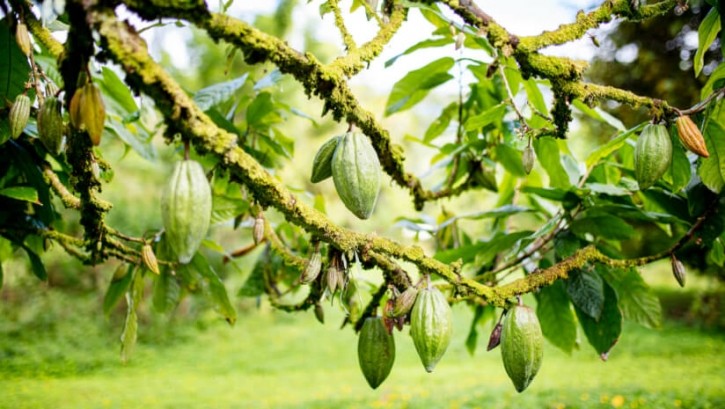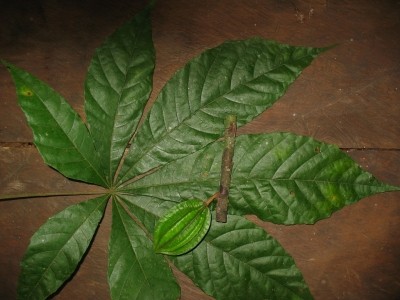Can a cacao gene atlas help solve the cocoa crisis?

It’s not news to confectioners that cocoa prices reached at historic highs this year. And while improved weather in West Africa should improve next season’s yields, pests and diseases still pose a significant threat to the livelihoods of farmers and producers.
Indeed, estimates from the International Cocoa Organization suggest that between 30% to 40% of the world’s cacao crop is lost every year due to these factors.
But now scientist hope that by understanding more about the cacao trees’ genetics, they can help farmers identify and grow more resilient crops.
The Cacao Gene Atlas is the result of an eight-year project at Penn State University to map the genomes of the world’s cacao trees. The research, backed by Mondelēz International and the US Department of Agriculture’s National Institute of Food and Agriculture, was published in the journal BMC Plant Biology in June 2024 and is freely available to the public.
Easing pressures on cacao farmers
“Our main inspiration is to help cacao farmers,” says Dr Mark Guiltinan, Professor of Plant Molecular Biology at Penn State University.
“Breeding trees is slow,” he says, “And cacao farming is difficult. Farmers need better genetic strains of cacao to fight diseases and give good yields.”
Uncovering a wealth of previously unknown genetic information about cacao can support farmers and the wider environment. “Discovering the genes and mechanisms of disease resistance and quality traits can help speed up cacao breeding,” says Guiltinan.
Extensive gene data
For the research study, Evelyn Kulesza, a doctoral candidate in plant biology, and Patrick Thomas, a postdoctoral researcher in the Department of Plant Science, gathered cocoa samples from different tropical locations. They then extracted and sequenced the genetic material from these samples.
Penn State University researchers analyzed the transcriptomes, the protein-coding part of an organism’s genome, to understand the activity of each gene in cells and tissues.
This data forms the 11.2m datapoints in the atlas. Each one estimates gene expression levels for all 28,000 cacao genes in a particular cacao tissue, in short, allowing cocoa researchers to understand what genes control disease resistance and other beneficial traits.
“We extracted RNAs and sequenced transcriptomes from 123 different tissues and stages of development representing major organs and developmental stages of the cacao lifecycle,” says Patrick Thomas. “In addition, we performed several experimental treatments and time courses to measure gene expression in tissues responding to biotic and abiotic stressors.”
The resulting data gives researchers insights into where specific genes are expressed in cacao and at what expression levels.
Learning more about cacao
The cacao gene atlas enables researchers to simulate the effects of modifying or boosting a gene on the plant, saving time and resources compared to growing the actual plant for testing hypotheses.
Cacao is often called an orphan crop due to the limited availability of genetic resources for the chocolate tree compared to crops like corn, rice, or cotton. This atlas changes that dynamic by providing growers and researchers with a freely accessible genomics resource.
“We’ve expanded the knowledge base, which allows other scientists who maybe don’t have the monetary support or lab space to conduct experiments to test how different genes behave,” says Kulesza.
Moulding the chocolate sector
With this level of comprehensive information, the cacao gene atlas has the potential to shape cocoa farming and the wider chocolate industry. “In seconds, the atlas can be used to display expression patterns of any cacao gene throughout the lifecycle of cacao — this will aid in the discovery of genes for important traits and to accelerate breeding for new varieties of cacao far into the future,” says Guiltinan.
“Genetics is a major factor in improving sustainability,” he says. Yet, understanding the genetic nature of cacao varieties is a current barrier. “Speeding it up is critical since it’s so slow. Without such improvements and in the face of climate change, we expect a further shortfall in production and increased cocoa prices,” says Guiltinan.
The cacao gene atlas is one tool that strives to provide accurate breeding to try to avert those issues.
New data can be added to the atlas as it becomes available to expand accessible information. “Ultimately, we hope this serves the cacao farmers of the world by helping them combat plant disease and produce quality cocoa beans for industry,” he says.

















